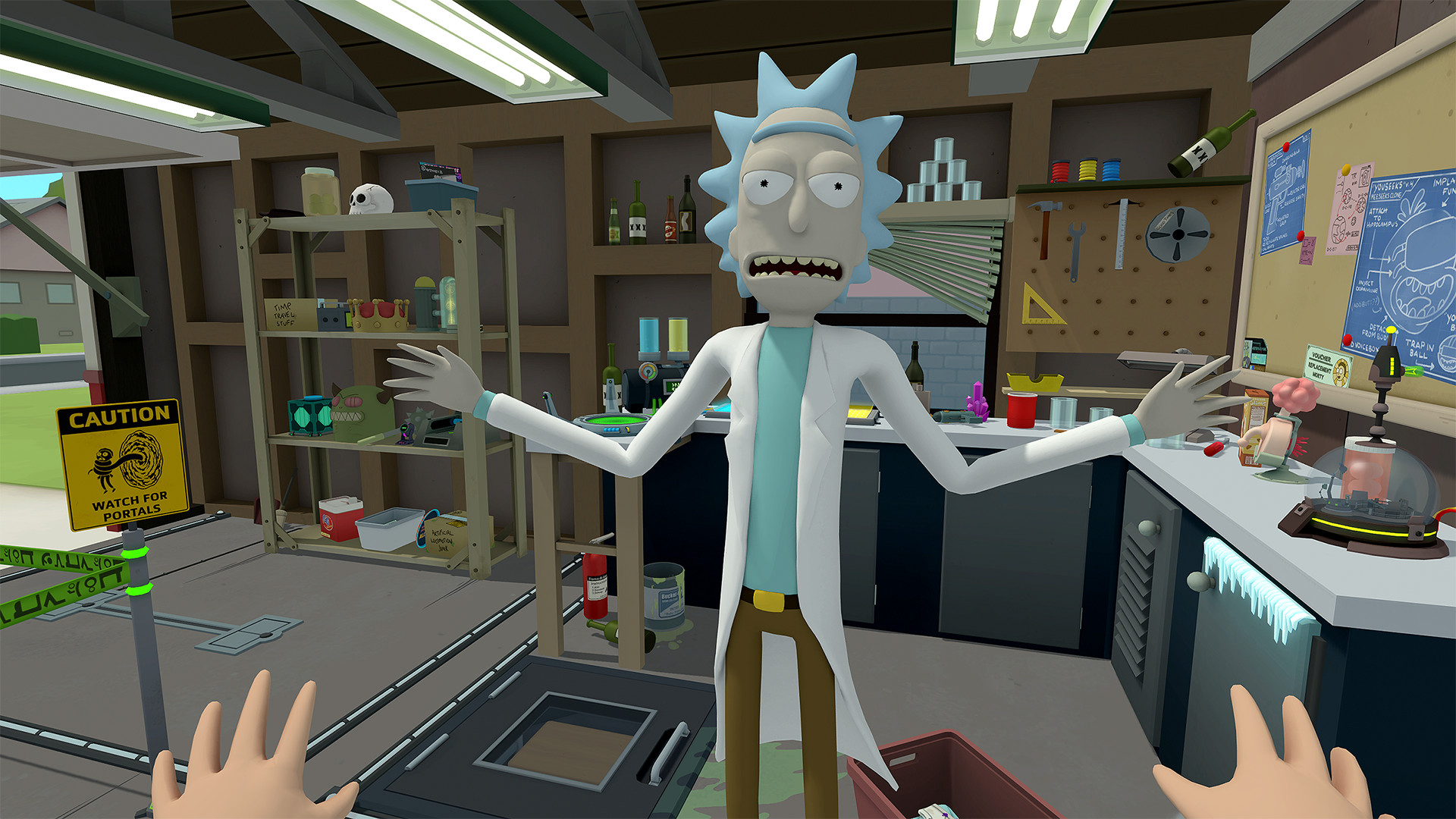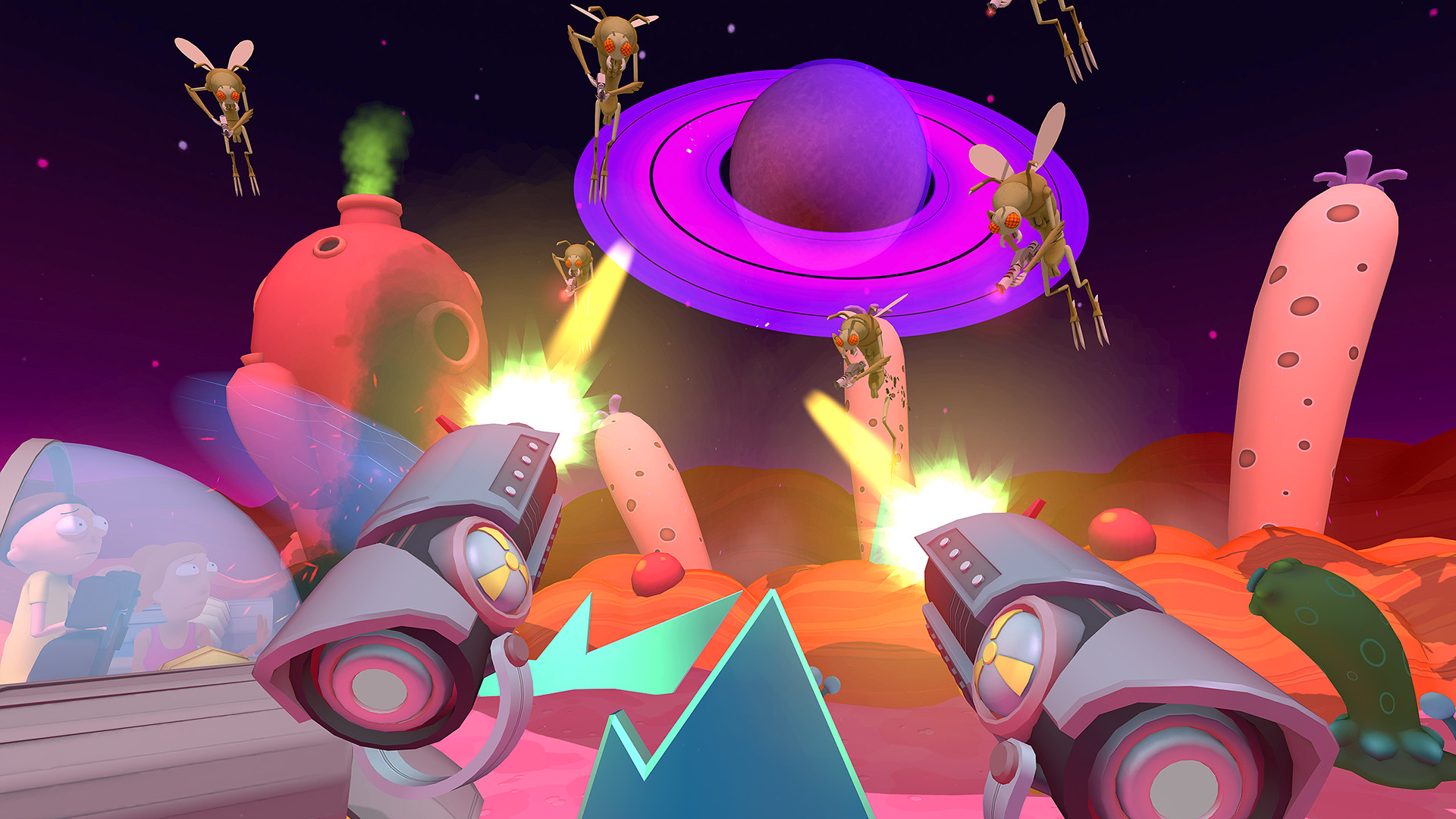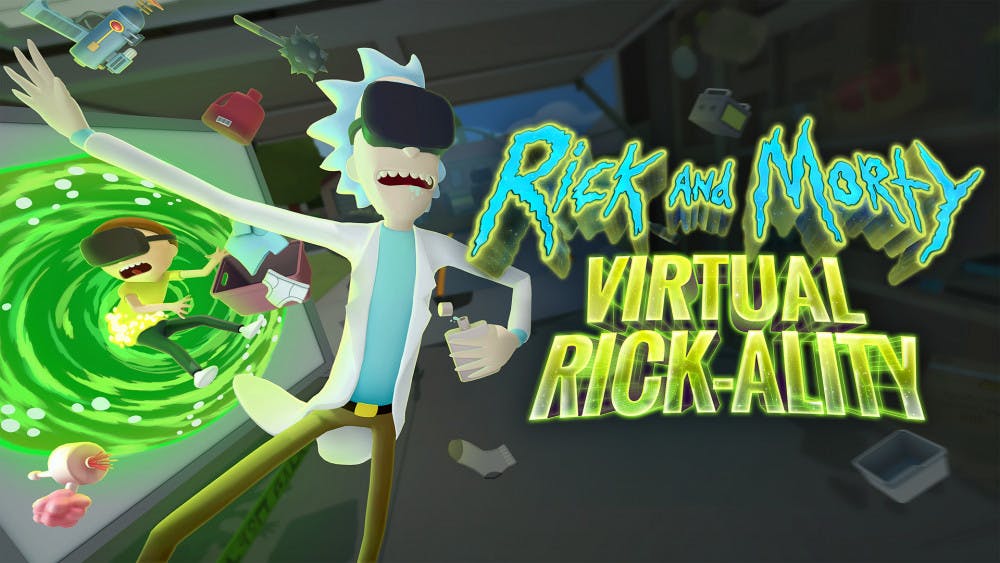by Emily Reuben Disclaimer: This playthrough was performed on an Intel i7-6700 with a GTX 1080 graphics card. This review is based on the PC version of the game. This copy of the game was provided by the developer for review purposes. With Season 3 of the animated comedy having shaken up the internet and a few McDonalds higher-ups, fans of the show who own Virtual Reality sets got excited for the new installment in the series. Will it make players shout “Wubba lubba dub dub!” or “I am in great pain; please help me!”? Wait.
A story even Jerry could write
 The player inhabits the floating head and hands of a Morty clone that Rick creates to do his bidding while he and the real Morty go off on their wacky adventures. As such, the majority of gameplay takes place in the Smith family’s garage, doubling as Rick’s workshop where he keeps all of his inventions. The player is tasked with completing several mundane tasks in very not mundane ways. The player does laundry, charges batteries, buys things off the internet, fights off the intergalactic government, saves the world from a giant alien menace, and fixes a computer. Clone Morty receives his instructions from Rick relayed from a watch that displays a hologram of Rick’s head as he demeaningly doles out instructions. The player interacts with everything in a manner that is practically identical to developer Owlchemy Lab’s most recent success, Job Simulator: picking things up, throwing things, and making a mess in the process.
Most fans of Rick and Morty come for the cheeky dark humor and stay for the absurdist and existential philosophy. Unfortunately, Virtual Rick-ality does not go out of its way to do anything new or creative. Almost every part of the game is a reference to a past episode, with very little being done to innovate. Rick’s garage is littered with recognizable mementos from past adventures, but there is precious little new material that is made of this virtual reality. This may be a good thing for most fans of the series; having what could essentially be called an hour-long Rick and Morty episode only available for those able to spend the $600+ on a VR headset and motion controllers could seem a bit unfair. However, to those who made that investment, the game’s writing is disappointing. To augment the feeling that Virtual Rick-ality is not on par with the show in a narrative sense, Rick and Morty make fun of the fact that they are in a game at one point saying, “This is canon. Cannon shit is happening in this VR game. Cannon shit.”
The player inhabits the floating head and hands of a Morty clone that Rick creates to do his bidding while he and the real Morty go off on their wacky adventures. As such, the majority of gameplay takes place in the Smith family’s garage, doubling as Rick’s workshop where he keeps all of his inventions. The player is tasked with completing several mundane tasks in very not mundane ways. The player does laundry, charges batteries, buys things off the internet, fights off the intergalactic government, saves the world from a giant alien menace, and fixes a computer. Clone Morty receives his instructions from Rick relayed from a watch that displays a hologram of Rick’s head as he demeaningly doles out instructions. The player interacts with everything in a manner that is practically identical to developer Owlchemy Lab’s most recent success, Job Simulator: picking things up, throwing things, and making a mess in the process.
Most fans of Rick and Morty come for the cheeky dark humor and stay for the absurdist and existential philosophy. Unfortunately, Virtual Rick-ality does not go out of its way to do anything new or creative. Almost every part of the game is a reference to a past episode, with very little being done to innovate. Rick’s garage is littered with recognizable mementos from past adventures, but there is precious little new material that is made of this virtual reality. This may be a good thing for most fans of the series; having what could essentially be called an hour-long Rick and Morty episode only available for those able to spend the $600+ on a VR headset and motion controllers could seem a bit unfair. However, to those who made that investment, the game’s writing is disappointing. To augment the feeling that Virtual Rick-ality is not on par with the show in a narrative sense, Rick and Morty make fun of the fact that they are in a game at one point saying, “This is canon. Cannon shit is happening in this VR game. Cannon shit.”
Performances straight out of a Zigerion simulation
The voice acting here is just as stiff and emotionless as the animations.VR games generally are not designed to be photo-realistic, and Virtual Rick-ality is no exception. The game’s models all look nearly identical to their two-dimensional counterparts in the television show. The problem isn’t with the character design but with the stilted movement and dead facial expressions. In addition, the lip syncing is nowhere near believable when Rick and Morty are talking, making the game unironically feel like watching a bad dub. Many licensed games related to film and television franchises do not have the luxury of having the original voice actors represent their characters in the games, and lacking the original voice actors can greatly decrease the quality of a game. Luckily, Virtual Rick-ality has Justin Roiland voicing Rick and Morty. However, the voice acting here is just as stiff and emotionless as the animations. At least you can’t fault Owlchemy Labs for their consistency. The quality of the voice acting is on par with the sketch bits from the episodes “Rixty Minutes” and “Interdimensional Cable 2: Tempting Fate”, keeping all the ad hoc sound with virtually none of the creative energy that garnered almost universal praise.
Maybe in another dimension…
The concept of this game may be its weakest attribute. With two seasons of innovative ideas and loads of over the top scenarios, it seems like a more creative premise would have worked better for this game. While rummaging around in Rick’s workshop is fun for a while, the confined nature of the game starts to take hold after about 20 minutes. In terms of Rick and Morty, there does not seem to be a story that needs telling in the VR format. There are plenty of ideas floating around in the ether about cool Rick and Morty games. Since this is the second official Rick and Morty game released, it feels like there was a lot more exciting ground to cover that instead took a backseat to playing around in an extremely limited play space. Had this come out in a market that had already seen a major Rick and Morty game that built on the series’ story, I doubt this game would be as disappointing.
All in all, Virtual Rick-ality feels less like a new Rick and Morty adventure and more like a VR tie-in that takes advantage of the show’s well-deserved popularity. While it succeeds in reminding players about the best moments from the show, it does nothing to make its own great moments. None of the elements rise to the heights seen in the television show. The game’s originality doesn’t come close to the Adult Swim series, or the show’s mobile game, Pocket Mortys.
To see Byte’s review of Rick and Morty Season 3, Episode 1 click here.
All Images From: Steam
about 20 minutes. In terms of Rick and Morty, there does not seem to be a story that needs telling in the VR format. There are plenty of ideas floating around in the ether about cool Rick and Morty games. Since this is the second official Rick and Morty game released, it feels like there was a lot more exciting ground to cover that instead took a backseat to playing around in an extremely limited play space. Had this come out in a market that had already seen a major Rick and Morty game that built on the series’ story, I doubt this game would be as disappointing.
All in all, Virtual Rick-ality feels less like a new Rick and Morty adventure and more like a VR tie-in that takes advantage of the show’s well-deserved popularity. While it succeeds in reminding players about the best moments from the show, it does nothing to make its own great moments. None of the elements rise to the heights seen in the television show. The game’s originality doesn’t come close to the Adult Swim series, or the show’s mobile game, Pocket Mortys.
To see Byte’s review of Rick and Morty Season 3, Episode 1 click here.
All Images From: Steam



















